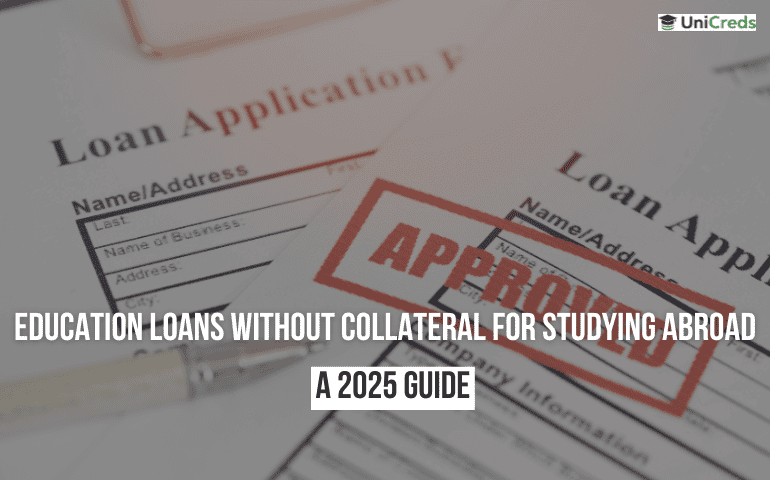Table of Contents
When it comes to financing your higher education, understanding student loans can be overwhelming. One option that stands out among the multitude of financial aid offerings is the Federal Stafford Loan. In this blog, we will dissect the Federal Stafford Loan, breaking down what it is, how it works, eligibility criteria, interest rates, borrowing limits, and the myriad benefits and protections it offers to borrowers.
What Is A Federal Stafford Loan?
The Federal Stafford Loan, often simply referred to as a Stafford Loan, is a federal student loan programme designed to help undergraduate and graduate students finance their education. Administered by the U.S. Department of Education, this loan is a popular choice for many due to its competitive interest rates and flexible repayment options.
Key Terms For Understanding Stafford Student Loan
Before diving deeper into the intricacies of Stafford loans, let’s clarify some key terms for a better understanding:
To gain a comprehensive understanding of Stafford loans, it’s essential to familiarise yourself with key terms and distinctions. Stafford loans come in two primary forms: Subsidised and unsubsidized.
1. Subsidised Loan
- Targeted undergraduate students demonstrating financial need as determined by the FAFSA®.
- During your enrollment and deferment periods, the federal government covers the interest.
- After a six-month grace period, interest begins to accumulate, and you are responsible for it during repayment.
2. unsubsidized Loan
- Accessible to both undergraduate and graduate students, regardless of financial need.
- Interest starts accruing from the moment you enrol in school, and you are accountable for it throughout the loan’s life.
Additional Terms
- Grace Period: A fixed timeframe, typically six months, post-graduation or leaving school, during which loan payments are not obligatory.
- Origination Fee: A fee, determined by the Department of Education, subtracted from the borrowed amount.
- Annual Loan Amount: A yearly cap on the combined total of subsidised and unsubsidized loans, determined by the U.S. Department of Education.
- Cumulative Loan Amount: The total sum of subsidised and unsubsidized loans that a student can borrow over their lifetime.
- Loan Servicer: An independent company assigned by the federal government to manage billing and customer service for each federal student loan you acquire.
Key Benefits Of Stafford Student Loan
Stafford loans variety of benefits and safeguards to ensure manageable repayment for borrowers. Here are some key advantages:
1. Flexible Repayment Period: While the standard repayment period for Stafford loans is typically 10 years, borrowers with more than $30,000 in federal student loans can extend their repayment term. This flexibility allows borrowers to tailor their repayment schedule to their financial circumstances.
2. Post-Graduation Payment Schedule: Repayments for Stafford loans commence after graduation, when you leave school, or if your enrollment status drops below half-time. This ensures that you have time to secure stable employment before beginning to repay your loans.
3. Income-Based Repayment (IBR): Stafford loan borrowers can opt for Income-Based Repayment (IBR) plans. These plans calculate monthly payments based on a percentage of the borrower’s income.
After a specified number of years in repayment, any remaining debt may be forgiven. The payment amount is determined as 15 per cent of discretionary income, which is the amount by which adjusted gross income (AGI) exceeds 150 per cent of the poverty line. The poverty line considers the borrower’s family size and state of residence.
4. Graduated Repayment: Graduated repayment is another repayment option available to Stafford loan borrowers. It starts with slightly higher monthly payments compared to interest-only repayment plans, and the amount owed increases every two years.
This plan provides borrowers with the opportunity to manage lower payments early in their careers, with the expectation that their income will increase over time.
5. Deferment and Forbearance: In cases of financial hardship, such as job loss, borrowers may qualify for loan deferment or forbearance. This allows borrowers to temporarily halt federal student loan payments or reduce the payment amount.
However, it’s important to note that if your loan is unsubsidized, interest will continue to accrue at its regular rate and be added to the total loan balance during deferment or forbearance.
Eligibility For Stafford Loan
Eligibility for Stafford Loan
- U.S. citizen, national, or eligible non-citizen
- Enrolled at least half-time in an eligible degree or certificate-granting programme
- High school diploma or equivalent (e.g., GED) required
- Must not be in default on any existing federal student loans
- Must meet general eligibility requirements for federal student aid
FAFSA Submission
- Submit a Free Application for Federal Student Aid (FAFSA®) annually
- Crucial for accessing financial aid, including scholarships, grants, work-study, and federal loans
Note: The opening date for the 2024-25 FAFSA® has been moved to December by the Department of Education for that year only
Loan Amount Determination
- School determines the loan amount based on the cost of attendance and other financial aid received
- This applies to both subsidised and unsubsidized loans, as well as other financial aid
Private Student Loans
- Consider private student loans if federal options are exhausted
- Issued by banks and financial institutions
- Features different interest rates and repayment terms
- Can help cover remaining gaps in financing
Federal Stafford Loan Annual And Aggregate Limits
| Year in School | Subsidised Loan Limit | unsubsidized Loan Limit | Combined Limit |
| First-Year | $3,500 | $2,000 (additional) | $5,500 |
| Second-Year | $4,500 | $2,000 (additional) | $6,500 |
| Third-Year and Beyond (Undergraduate) | $5,500 | $2,000 (additional) | $7,500 |
| Graduate or Professional Students | N/A | $20,500 (unsubsidized) | $20,500 (unsubsidized) |
Current Federal Stafford Loan Interest Rates
The current Stafford loan interest rates for loans first disbursed between July 1, 2022, and July 1, 2023, are as follows:
- Subsidised and unsubsidized Stafford loans for undergraduates have a fixed interest rate of 4.99%.
- Graduate students will receive a fixed interest rate of 6.54%.
These rates are fixed for the entire duration of the loan and do not change. It’s important to note that federal student loan interest rates reset annually on July 1st for new loans.
Also, for loans disbursed between October 1, 2020, and October 1, 2023, there is an origination fee for Stafford loans, which is 1.057%. This fee covers the cost of issuing the funds, so it’s important to factor this cost into your loan considerations.
Note: These rates are fixed at the time of disbursement, so if you have multiple disbursements over several years, you may have loans with different interest rates.
How Much Can You Borrow with Stafford Loans?
The amount you can borrow with Stafford loans varies based on your academic level and dependency status. In addition to the annual limits mentioned earlier, there are also aggregate limits that cap the total amount you can borrow throughout your education. These limits are as follows:
- Dependent Undergraduate Students: $31,000 (no more than $23,000 in subsidised loans)
- Independent Undergraduate Students: $57,500 (no more than $23,000 in subsidised loans)
- Graduate or Professional Students: $138,500 (no more than $65,500 in subsidised loans)
What Happens After Your Approval for a Stafford Loan?
Once your Stafford loan is approved, the next steps involve the disbursement of funds to your college and managing any remaining balance. Here’s what happens after approval:
1. Disbursement of Funds: The funds from your Stafford loan, whether subsidised or unsubsidized, will be sent directly to your college. These funds can be used to cover various expenses, including tuition and fees, room and board, as well as other costs related to your programme of study, such as technology or equipment.
2. Initial Waiting Period: If you’re a first-year undergraduate student and this is your first time borrowing a Stafford loan, you may need to wait for 30 days after your enrollment period begins before your first disbursement. It’s essential to check with your school’s financial aid office to confirm if this waiting period applies to your specific situation, as procedures may differ.
3. Contact from Loan Servicer: After the loan disbursement to your college, you’ll be contacted by the loan servicer responsible for managing your Stafford loan. This service will provide you with information on loan repayment and other essential details regarding your loan.
4. Handling Leftover Funds: If there are any remaining funds after your college expenses have been covered, you have several options for handling them. These leftover funds can be refunded to you through methods like a check, cash, debit card, or electronic funds transfer (EFT). However, it’s crucial to note that these refunds must be used for educational expenses such as textbooks and supplies.
5. Consider Responsible Use: While receiving a refund can be tempting, it’s wise to consider using any unused funds responsibly. One recommended approach is to allocate any extra money towards reducing your total borrowed amount. This not only lowers your overall debt but can also result in more manageable monthly payments when you graduate from school.
Stafford Loan To-Do List
Here is a quick to-do list for Stafford student loans:
- Apply: Submit your FAFSA® early for first-come, first-served financial aid.
- Determine Costs: Understand your school’s cost of attendance to assess your financial needs.
- Compare Offers: Evaluate financial aid offers from different schools.
- Calculate Eligibility: Find out your eligibility for subsidised and unsubsidized Stafford loans.
- Consider Private Loans: If needed, explore private student loans to fill funding gaps.
- Maximise Stafford Loans: Utilize Stafford loans for their low-interest rates and flexible repayment options in financing your education.
Conclusion
In conclusion, the Federal Stafford Loan can be a lifeline for students seeking financial support for their education. Understanding the loan’s ins and outs, along with its benefits and protections, is crucial to making informed decisions about your educational financing. By following the steps and staying proactive in managing your loan, you can pave the way to a brighter academic future without overwhelming financial stress.
FAQs
1. What is a Federal Stafford Loan?
A federal Stafford Loan is a type of student loan that is subsidised or unsubsidized by the US government.
2. What is the difference between subsidised and unsubsidized Federal Stafford Loans?
Subsidised Stafford Loans are awarded to students with demonstrated financial need. The government pays the interest on these loans while the student is in school and during certain grace periods. unsubsidized Stafford Loans are available to all students, students are responsible for paying.
3. What is the maximum amount I can borrow through a Federal Stafford Loan?
The maximum amount you can borrow through a Federal Stafford Loan depends on your year in school and your dependency status. For example, first-year dependent students can borrow up to $5,500 in subsidised Stafford Loans and $2,000 in unsubsidized Stafford Loans.
4. Can I defer or forbear payments on a Federal Stafford Loan?
Yes, you can defer or forbear payments on a Federal Stafford Loan under certain circumstances. For example, you can defer payments if you are enrolled in school at least half-time, if you are in the military, or if you are experiencing financial hardship.
5. Are there any fees associated with Federal Stafford Loans?
Yes, there are some fees associated with Federal Stafford Loans, such as an origination fee and a late payment fee.
6. How does the Free Application for Federal Student Aid (FAFSA) relate to Federal Stafford Loans?
You must complete the FAFSA in order to be eligible for Federal Stafford Loans. The FAFSA will determine your financial need and how much you can borrow in Stafford Loans.
7. Are Federal Stafford Loans available for graduate or professional students?
Yes, Federal Stafford Loans are available for graduate or professional students. However, the maximum amount you can borrow is higher for undergraduate students.
8. Can parents of dependent students get Federal Stafford Loans?
No, parents of dependent students cannot get Federal Stafford Loans. However, they can get Parent PLUS Loans to help pay for their child’s education.
9. Can I consolidate Federal Stafford Loans?
Yes, you can consolidate Federal Stafford Loans into a single loan with a single monthly payment.
10. What are the benefits of Federal Stafford Loans compared to private loans?
Federal Stafford Loans have several benefits over private loans, such as lower interest rates, more flexible repayment options, and forgiveness programmes.
Thanks for reading this blog; If you want to read more such informative blogs; please check out the links below.










0 Comments